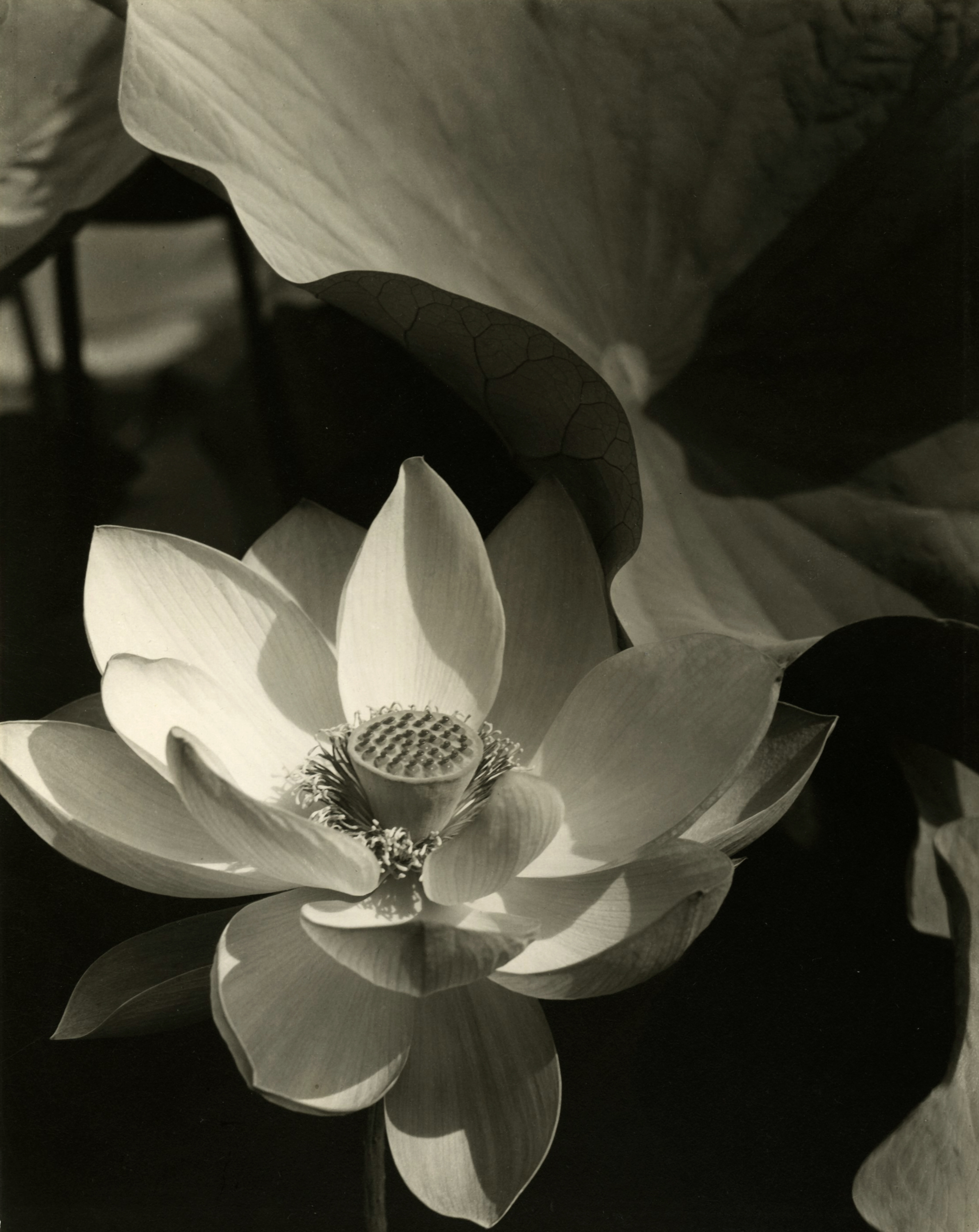
Lotus, Mt. Kisco, New York, 1915
Edward Steichen
Edward Steichen (1879 – 1973) was born in Luxembourg, but immigrated to the United States, to Milwaukee, in 1880. In 1894, Steichen began a four-year lithography apprenticeship with the American Fine Art Company of Milwaukee. After hours, he would sketch and draw, and began to teach himself to paint. Having come across a camera shop near to his work, he bought his first camera, a secondhand Kodak box "detective" camera, in 1895.
In 1900, as Steichen headed to Paris to study painting, he stopped in New York. By that time he was an aspiring painter and an accomplished photographer in the soft-focus, Pictorial style and he made a pilgrimage to the Camera Club of New York to show his work to Alfred Stieglitz, the leading tastemaker in American photography. Stieglitz, vice-president of the Camera Club and editor of its journal Camera Notes, was impressed by the young artist from Milwaukee and bought three of his photographs—a self-portrait and two moody, atmospheric woodland scenes printed in platinum—for the impressive sum of five dollars each. Elated, Steichen then boarded the ship for Europe.
Once in France, Steichen quickly abandoned his painting studies and began to focus his energies on photography. He learned the technical intricacies of the gum bichromate process, popular among the members of the Photo-Club de Paris, and developed a reputation as a portraitist of noted artists, writers, and members of society. Arriving back in New York in 1902, Steichen rented a studio on the top floor of a brownstone at 291 Fifth Avenue and hung out his shingle; his work as a professional portrait photographer flourished.
That same year, Stieglitz announced the formation of the Photo-Secession—the name he gave to the loose-knit group of photographers he exhibited, published, and promoted during the next decade and a half—and the publication of a new, still more lavish journal, Camera Work. Over the fifteen-year, fifty-issue run of Camera Work, no other artist would be featured as prominently as Steichen, who had sixty-five photographs and three paintings reproduced in fifteen issues, including a "Special Steichen Supplement" in April 1906 and an all-Steichen double issue in 1913.
In 1906, Steichen determined "to get away from the lucrative but stultifying professional portrait business" and return to France with his family in hopes of resuscitating his idled painting career. It was a move with numerous consequences. For one, it positioned him to embrace the Autochrome, the process for making glass-plate color transparencies introduced by the Lumière brothers in 1907. Steichen—who had experimented with various methods such as gum bichromate to introduce color into his photographs—was enthralled by the technique. Steichen also made what he called his "first attempt at serious documentary reportage" in the summer of 1907, using a borrowed hand camera.
Steichen returned to the U.S. in 1914. Serving in the US Army in World War I (and the US Navy in the Second World War), Steichen commanded significant units contributing to military photography. After World War I, during which he commanded the photographic division of the American Expeditionary Forces, he reverted to straight photography, gradually moving into editorial and fashion photography. His portraits of Greta Garbo, Marlene Dietrich, Gloria Swanson, and other celebrities appeared in Vogue and Vanity Fair in the 1920s and 1930s.
From 1947-1962, Steichen served as the Director of Photography at New York's Museum of Modern Art.. Among other accomplishments, Steichen is appreciated for creating the 1955 exhibition, The Family of Man, at the Museum of Modern Art consisting of over 500 photographs. Steichen purchased a farm that he called Umpawaug in 1928, just outside West Redding, Connecticut, and lived there until his death.
Exhibitions